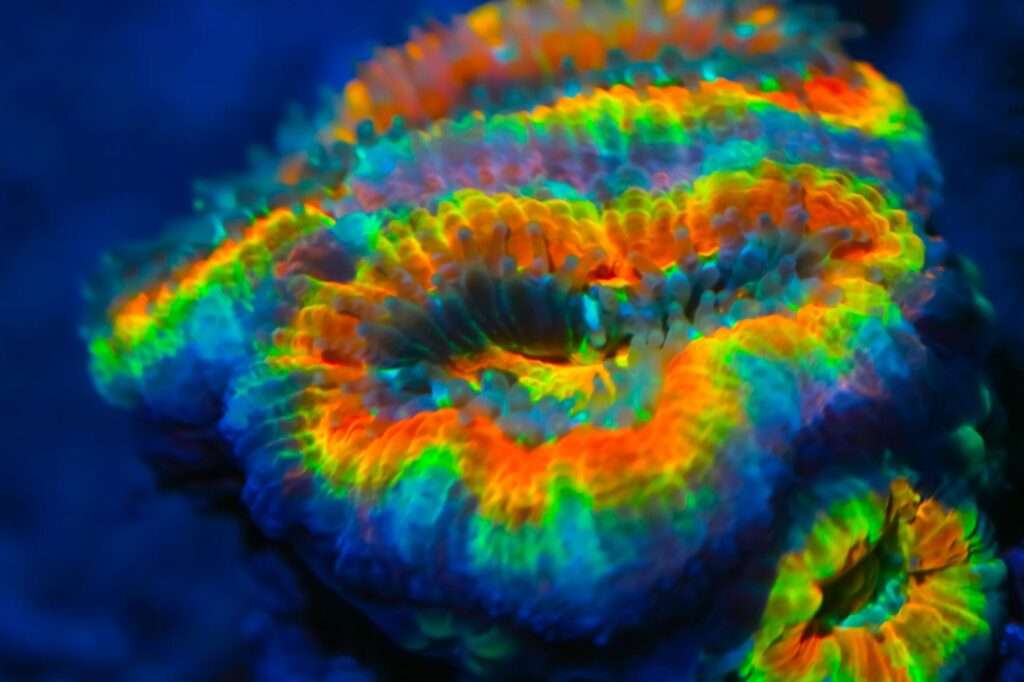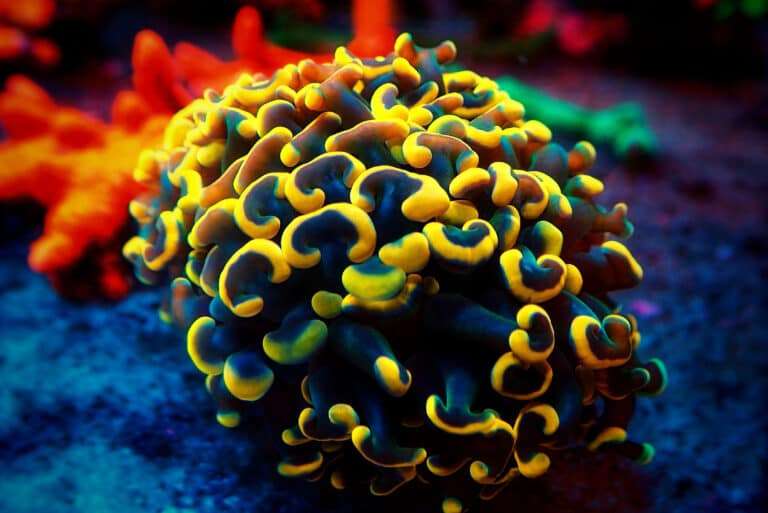
Elegant Donut Coral is one of numerous large polyp stony (LPS) corals that have a spherical, donut-like appearance—hence the names doughnut and donut corals. However, the Scolymia species can produce a wide range of shapes in addition to a doughnut. Scolymia vitiensis can be saucer-like or cup-shaped, but it typically has a dome or flat shape.
The Scolymia species can produce a wide range of shapes in addition to a doughnut. Scolymia vitiensis can be saucer-like or cup-shaped, but it typically has a dome or flat shape.
Habitat
Haime first described the Scolymia genus in 1852. In captivity, the S. vitiensis has been reproduced.
Both the Pacific and the Atlantic are home to the Scolymia genus. They can be found in the Indo-Pacific Ocean at depths ranging from 10 to 131 feet, from Tahiti to Madagascar and Australia, then to Japan and the Ryukyu Islands (3 – 40 m). Some species of the Atlantic can be found in the Caribbean, the Gulf of Mexico, the East Brazilian Shelf, and the Western Atlantic coasts of the USA and Canada at depths of up to 98 feet (30 m). From Australia to the east to Fiji and the Marshall Islands, the Scolymia vitiensis can be found. They can be found all throughout Australia, but are only found in the Great Barrier Reef, Coral Sea, and south to Elizabeth and Middleton Reefs in the east.
The Scolymia vitiensis can be found in a wide range of reef settings, with some species being particularly frequent in bays, on outer reefs, on reef slopes, and in shady places, usually beneath ledges. Their depths range from 3 to 40 metres, or 10 to 131 feet. They spread their tentacles at night to feed.
Morphology
Skeletal structures in the Scolymia genus can be cup-shaped, saucer-shaped, flat, or dome-shaped. Their septa slope outward, are less visible (tall and toothlike), and are spaced more closely compared to the Cynarina Genus. Their skeleton is bigger, denser, and heavier than Cynarina, and the septa are spiky along the outside rim. With the Atlantic species, it has been noted that animals with larger, rougher septa tend to be more dominant.
Scolymia corals are normally solitary, however some species can also live in colonies. They have an oral disc with a single mouth most of the time, but occasionally there may be a few more openings. Their flesh is denser and more opaque (not clear) than Cynarina species, and the tissue conforms to the bone. Instead of producing pronounced bubbled formations like the Cynarina genus, it has the ability to produce tiny pimpled bumps on the surface. Scolymia corals are more rounded than Lobophyllia corals. At night, feeder tentacles emerge.
In Captivity

- Feeding
The Scolymia genus has evolved a number of feeding techniques. They get some of their nutrients from a marine alga called zooxanthellae through a symbiotic interaction. They can also take in dissolved organic substances and planktonic creatures as well as food particles from the water column. S. vitiensis thrives in captivity when fed pellet diet, mysis, cyclopeeze, and chopped 1/4″ pieces of shrimp. When tentacles are present, feed at night. They will develop more quickly and remain healthy if they are fed multiple times every week. Keep in mind that each polyp in a colony is an own animal, so be sure to feed each one.
- Social Interactions and Compatibility
The amiable Pacific Ocean species Scolymia tolerates other individuals of the same species. In the Atlantic, there are species that are more aggressive. Corals of the same species are suitable for S. vitiensis, but they must be kept isolated from other corals. They have feeding tentacles for the night. Although it’s more likely that they would be the ones who are defeated, they can sting others due to their docile demeanor. Scolymia corals may be affected by soft coral toxins, such as those from mushrooms, just like other members of its genus. They might eventually perish in a tank with lots of soft corals. There should be expansion, thus the absence of it is problematic. Utilizing carbon might be useful.
Table





